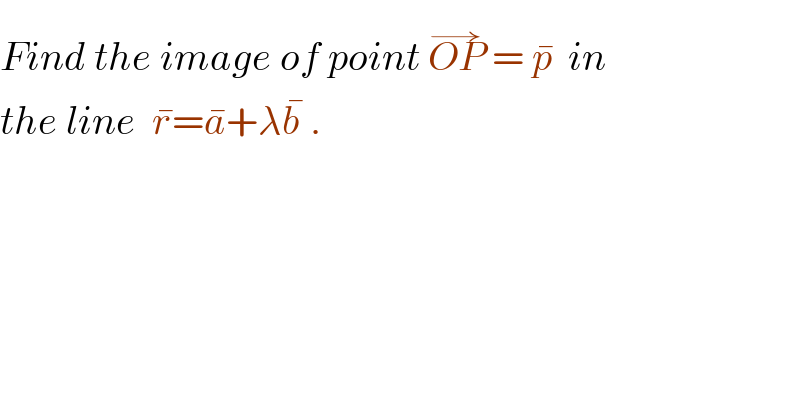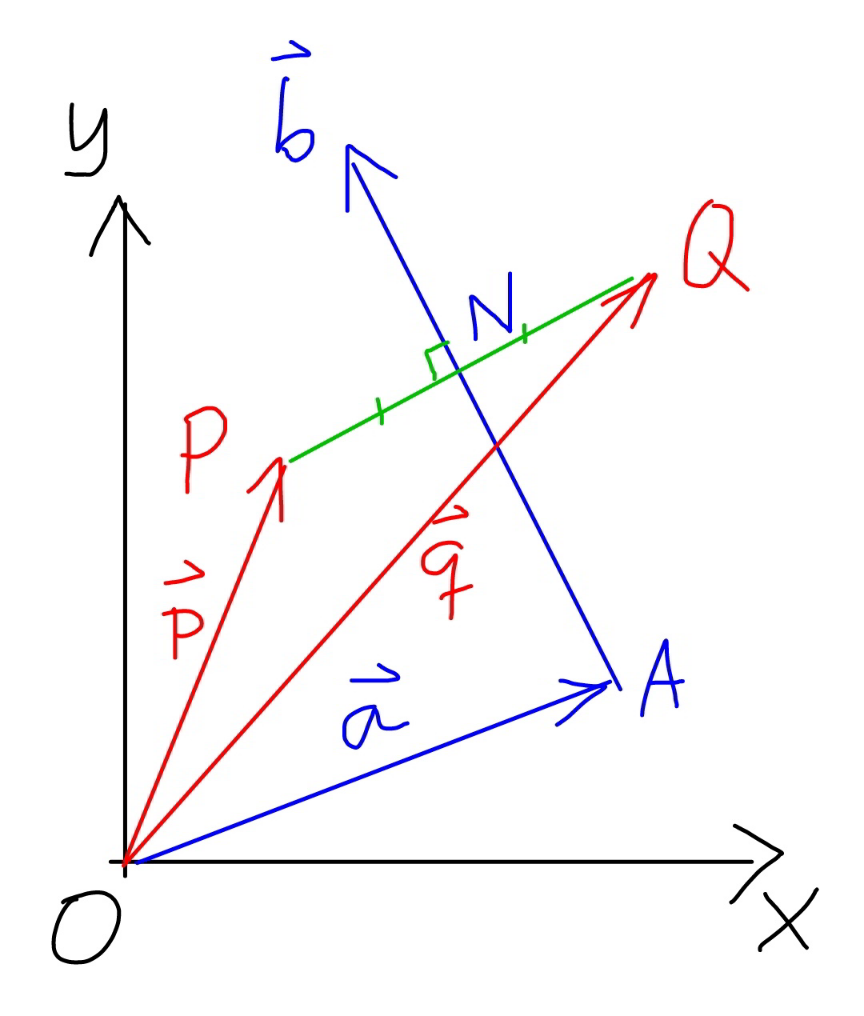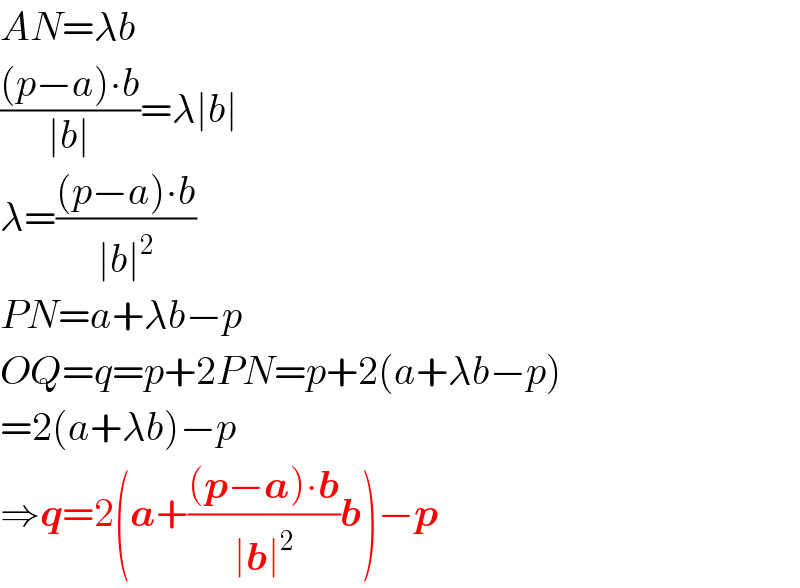
Question and Answers Forum
Question Number 104035 by ajfour last updated on 19/Jul/20

Answered by mr W last updated on 19/Jul/20

Commented by mr W last updated on 19/Jul/20

Commented by ajfour last updated on 19/Jul/20

Commented by mr W last updated on 19/Jul/20

Commented by ajfour last updated on 19/Jul/20
![((p+q)/2)=a+λb ⇒ q=2(a+λb)−p Now (q−p).b=0 [(a+λb)−p].b = 0 λ=(((a−p).b)/(∣b∣^2 )) q^� =(2a^� −p^� )+(((2(a^� −p^� ).b^� )/(∣b^� ∣^2 )))b^�](Q104075.png)
Commented by mr W last updated on 19/Jul/20

